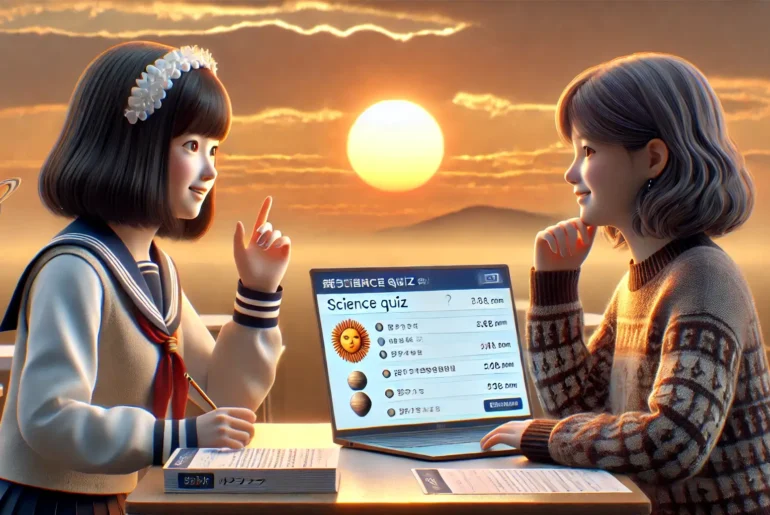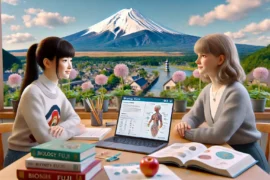Solar System Quiz |
Exploring the Wonders of Our Solar System
Introduction
The solar system is a fascinating place filled with diverse planets, moons, asteroids, and other celestial objects. Understanding the solar system is essential for grasping how our planet fits into the vast universe. This article complements a challenging quiz by providing in-depth explanations and examples about key aspects of the solar system, helping students deepen their understanding and appreciation of the cosmos. Whether you’re interested in the stormy atmosphere of Jupiter or the icy plains of Pluto, this guide will take you on an exciting journey through space.
Saturn: The King of Moons and Rings
Saturn is renowned not only for its stunning ring system but also for having the most confirmed moons in the solar system. With over 80 known moons, Saturn’s largest, Titan, stands out as a world of its own, with lakes of liquid methane and a thick atmosphere.
Example
Saturn’s rings, made up of countless ice and rock particles, are visible from Earth with a small telescope. Titan, Saturn’s largest moon, is even larger than the planet Mercury and has a thick atmosphere, making it one of the most intriguing moons in the solar system.
Jupiter’s Great Red Spot: A Storm for the Ages
Jupiter is famous for its Great Red Spot, a giant storm that has been raging for at least 350 years. This storm is so large that it could swallow Earth whole and is one of the most distinctive features in our solar system.
Example
The Great Red Spot is an example of the extreme weather found on Jupiter. Unlike storms on Earth, which last for days or weeks, this storm has persisted for centuries, showcasing the dynamic and turbulent atmosphere of the gas giant.
Venus: The Hottest Planet
Despite being the second planet from the Sun, Venus holds the title of the hottest planet in our solar system. Its thick atmosphere, composed mainly of carbon dioxide, traps heat, leading to surface temperatures hot enough to melt lead.
Example
The temperature on Venus is consistently around 467°C (872°F), making it hotter than Mercury, which is closer to the Sun. This intense heat is due to the greenhouse effect, where the thick atmosphere traps heat that would otherwise escape into space.
A Day on Venus: Longer Than a Year
One of the most fascinating aspects of Venus is its slow rotation. A single day on Venus, which is the time it takes to rotate once on its axis, is longer than a year, the time it takes to orbit the Sun. This unique feature makes Venus one of the most unusual planets in our solar system.
Example
Venus takes about 243 Earth days to complete one rotation, but only 225 Earth days to orbit the Sun. This means that on Venus, the Sun would rise and set only once during its entire orbit, creating incredibly long days and nights.
Ceres: The Dwarf Planet in the Asteroid Belt
Ceres is the largest object in the asteroid belt between Mars and Jupiter and is classified as a dwarf planet. It is the only dwarf planet located in the inner solar system and plays a key role in our understanding of the early solar system.
Example
Ceres, which makes up about one-third of the mass of the entire asteroid belt, has a surface composed of water ice and salts. Its discovery in the early 19th century marked the beginning of our exploration of the small bodies that populate our solar system.
Saturn’s Rings: A Celestial Wonder
Saturn’s rings are the most extensive and complex in our solar system, made of billions of particles ranging in size from tiny grains of ice to large chunks of rock. These rings are a defining feature of the planet and have fascinated astronomers for centuries.
Example
Even though all four of the gas giants in our solar system have ring systems, Saturn’s are by far the most prominent and visible. The rings are so expansive that they stretch out over 280,000 kilometers (about 175,000 miles) from the planet.
Venus: Earth’s Twin?
Venus is often referred to as Earth’s twin because of its similar size, mass, and composition. However, the conditions on Venus are vastly different from those on Earth, with extreme heat, crushing atmospheric pressure, and clouds of sulfuric acid.
Example
While Earth and Venus are similar in size and composition, their atmospheres are incredibly different. Venus’s thick atmosphere traps heat and creates surface temperatures much hotter than those on Earth, making it an inhospitable place for life as we know it.
The Kuiper Belt: The Solar System’s Frontier
The Kuiper Belt is a region of space beyond Neptune filled with icy bodies and dwarf planets, including Pluto. This area is thought to be a remnant of the early solar system and contains many objects that have remained unchanged for billions of years.
Example
The Kuiper Belt is like a frozen relic from the formation of the solar system. It is home to Pluto and other dwarf planets, as well as countless icy objects that help scientists understand the history and evolution of our solar system.
Uranus: The Tilted Planet
Uranus is unique among the planets in our solar system because it rotates on its side. This extreme tilt of about 98 degrees means that Uranus experiences extreme seasonal variations, with each pole getting around 42 years of continuous sunlight followed by 42 years of darkness.
Example
The unusual tilt of Uranus likely resulted from a massive collision with another celestial object early in its history. This tilt affects everything from the planet’s weather patterns to the appearance of its rings and moons.
Titan: A Moon with Lakes and Atmosphere
Titan, Saturn’s largest moon, is one of the most Earth-like bodies in the solar system, with a thick atmosphere and lakes of liquid methane and ethane. Titan’s complex weather system and surface features make it a prime candidate for future exploration.
Example
Titan’s atmosphere is so thick that it obscures the surface from view, requiring spacecraft like the Cassini-Huygens mission to use radar to map it. The discovery of liquid lakes on Titan has intrigued scientists, as they provide clues about the potential for life in the outer solar system.
New Horizons: Unveiling Pluto
New Horizons was the first spacecraft to visit Pluto, providing humanity with its first close-up images of the dwarf planet and its moons. The mission revealed Pluto to be a complex world with mountains, plains, and glaciers, far more active than previously thought.
Example
The images sent back by New Horizons showed a landscape with ice mountains and a vast, heart-shaped glacier, indicating that Pluto is geologically active. This discovery has reshaped our understanding of what is possible on distant, icy worlds.
Olympus Mons: The Giant Volcano on Mars
Mars is home to Olympus Mons, the largest volcano in the solar system. Standing at about 13.6 miles (22 kilometers) high, Olympus Mons is nearly three times the height of Mount Everest, making it one of the most impressive geological features in the solar system.
Example
Olympus Mons is so large that its base would cover the entire state of Arizona. This giant shield volcano, formed by repeated lava flows, highlights the geological activity that has shaped the surface of Mars.
Mercury and Venus: The Moonless Planets
Mercury and Venus are the only planets in the solar system that do not have any moons. Their proximity to the Sun’s strong gravitational field likely explains the absence of natural satellites.
Example
The lack of moons around Mercury and Venus makes them unique in the solar system. In contrast, other planets like Jupiter and Saturn have dozens of moons, including some that are larger than the planet Mercury itself.
The Sun’s Corona: A Plasma Envelope
The Sun’s corona is the outermost part of its atmosphere, composed mainly of plasma. The corona is much hotter than the Sun’s surface and can be observed during a total solar eclipse, when it appears as a halo of light surrounding the Sun.
Example
The Sun’s corona is a source of solar wind, a stream of charged particles that flow out into space and interact with the Earth’s magnetic field, creating phenomena like the auroras. Understanding the corona helps scientists learn more about solar activity and its impact on the solar system.
Jupiter: The Fastest Spinner
Jupiter, the largest planet in the solar system, also has the fastest rotation period, completing one rotation in just under 10 hours. This rapid spinning contributes to the planet’s strong magnetic field and its distinctive banded appearance.
Example
Jupiter’s fast rotation leads to extreme weather patterns, including powerful jet streams and storms like the Great Red Spot. The planet’s rapid spin also flattens it slightly, making it wider at the equator than at the poles.
Conclusion
The solar system is full of wonders and mysteries, each planet and moon offering something unique to explore and understand. From the stormy skies of Jupiter to the icy plains of Pluto, our solar system is a dynamic and fascinating place that continues to captivate scientists and students alike. By understanding these concepts, students can build a strong foundation in astronomy and develop a deeper appreciation for the universe beyond our planet. Keep exploring, stay curious, and enjoy the journey through space!








Comments are closed.